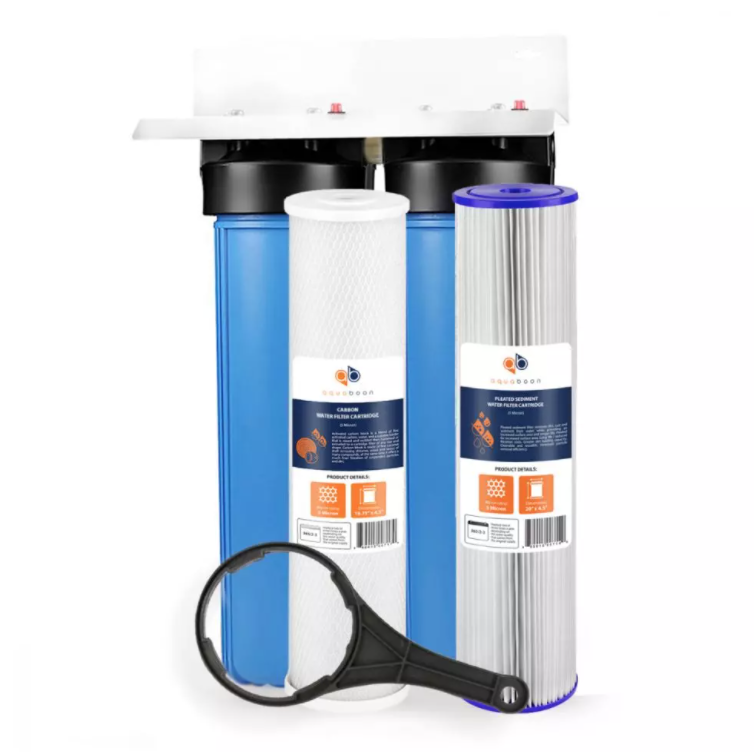7 tips on how to choose the best RO system for your kitchen


Reverse osmosis systems are the first line of defence against water-borne diseases. The systems come with added advantages such as getting rid of foul smells and unpleasant tastes in water. They also get rid of debris, chemicals, and other illness-causing contaminants.
To preserve the health of your entire family, installing an RO system for kitchen is an excellent idea. But where do you start?
This article shares the various types of reverse osmosis systems available and seven tips that ensure you choose the one best suited for your family.
Types of RO water filtration systems
The two types of RO purification systems include:
-
Counter-top RO systems
As their name suggests, these treatment systems are placed on the kitchen counter. They are easily movable and their installation process pretty straightforward. However, they may not be the right choice for some since they take up significant counter space.
-
Undercounter RO system
Also known as undersink RO systems, these are mounted below the sink. They treat lots of water, making them ideal for large families, organizations, and manufacturing industries. Although, their installation is more complex compared to a large number of similar systems and might require technical expertise.
Tips on how to choose the best RO system
If you are wondering how to choose RO water system, you have come to the right place.
Here are factors that will guide your purchasing decision.
1. Effectiveness
When choosing water filtration systems for the whole house the appliance’s treatment stages must remain top of mind. Systems with 4, 5, and 6 purification phases are the most common and the one to choose depends on the contaminants present in your water.
You can easily know these harmful substances by conducting a water test. Then leverage this information to find the perfect RO system that gets rid of the specific pollutants.
2. Certification
Purchasing certified purification technologies is one of the surefire ways to be sure that your system is of high quality. In this case, premium RO technologies will include NSF 42 or 53 certifications.
Owning certified appliances gives you peace of mind, knowing you have an authentic system manufactured from superior materials and will hold up as expected under usual working conditions.
3. Cost-effective replacement filters
Switching replacement cartridges is the best way to maintain the water’s quality. And since you are required to do this every six months or as frequently as needed, buying a system whose membranes for RO systems are inexpensive and readily available is essential.
4. Maintenance
Are you willing to change the cartridges yourself, or will you need professional help?
If additional maintenance costs are not things you want to deal with, pick a system whose cartridge replacement and cleaning processes are as straightforward as possible. Even then, understand that you might need to call in a professional to confirm the system’s purification efficiency once in a while.
5. Water output and wastage
Every home has its unique water consumption needs. Considering that RO systems have different water output capabilities, picking one that will keep up with your home’s daily consumption is of the utmost importance.
Additionally, you should also consider water wastage. Some systems will dispose of 75% of the water, increasing utility bills. To avoid this, choose systems with lower water waste.
6. Warranty
Buying a quality reverse osmosis system is a no-brainer. However, system failures and parts breaking down are not uncommon - even with superior quality appliances.
For this reason, going for systems with warranties is an excellent idea. It assures you of the appliance’s quality, while guaranteeing free replacements and maintenance in case of manufacturing defects.
Taking into account that manufacturers offer different warranty durations, be keen on picking one with extended free servicing.
7. Budget
Pricing is not the most critical thing when purchasing an ideal choice of reverse osmosis system, but it is something to consider. The better the appliance’s water-saving capabilities and treatment efficiency, the pricier it will be. Also, RO technologies with higher outputs attract higher prices.
As such, you need to first come up with a list of your ideal system’s must-have features. Then, once you find two or more appliances that fit your description, you can pick one that is gentler on your pockets.
Bonus Tip
RO systems need water pressure of approximately 40 to 60 psi, which is typically that of any municipal water supplier. However, if your home’s water pressure is below this, consider purchasing a booster pump together with the RO system.

Wrapping up
RO technologies safeguard your family’s health and these seven advices should remain top of mind when purchasing one. If you want professional help finding the perfect one for your home, contact Filterway today.












